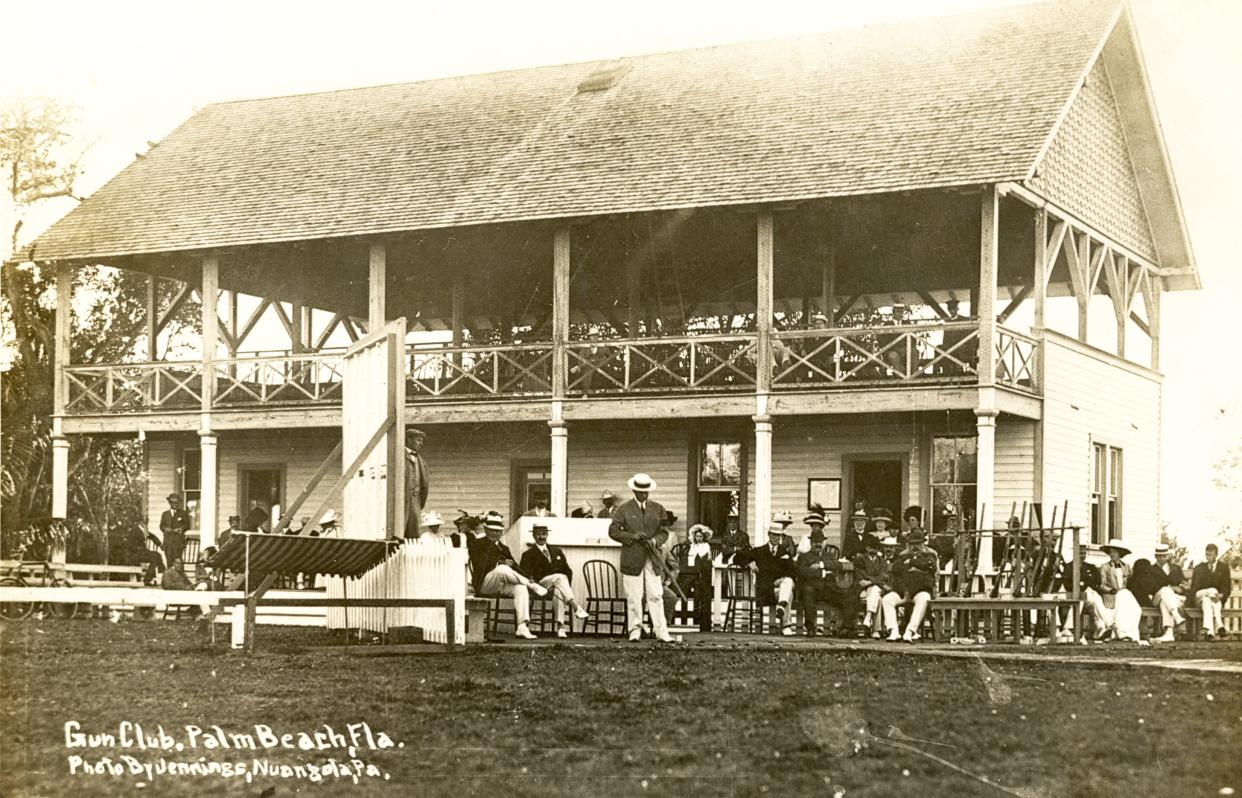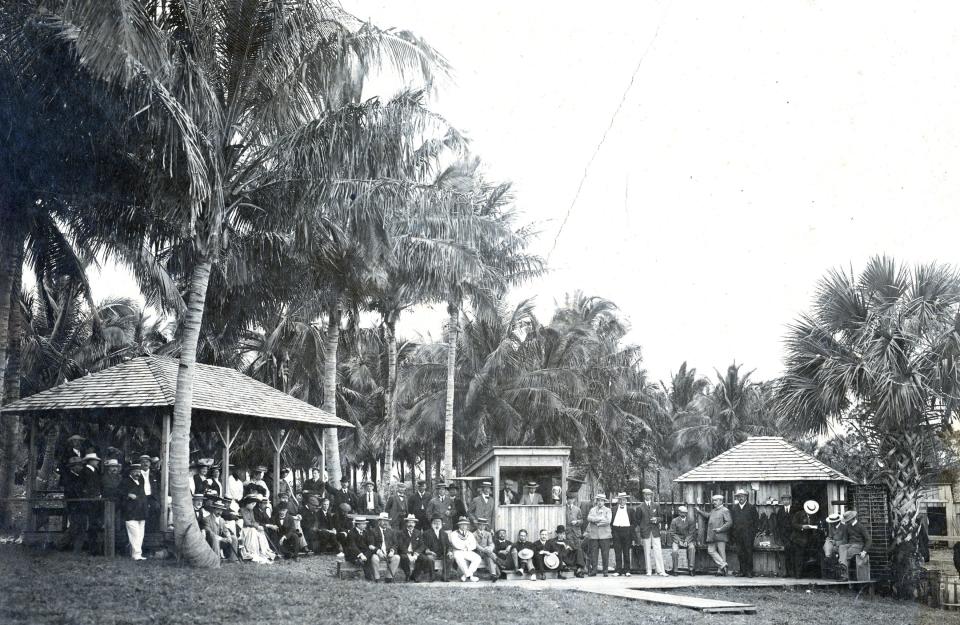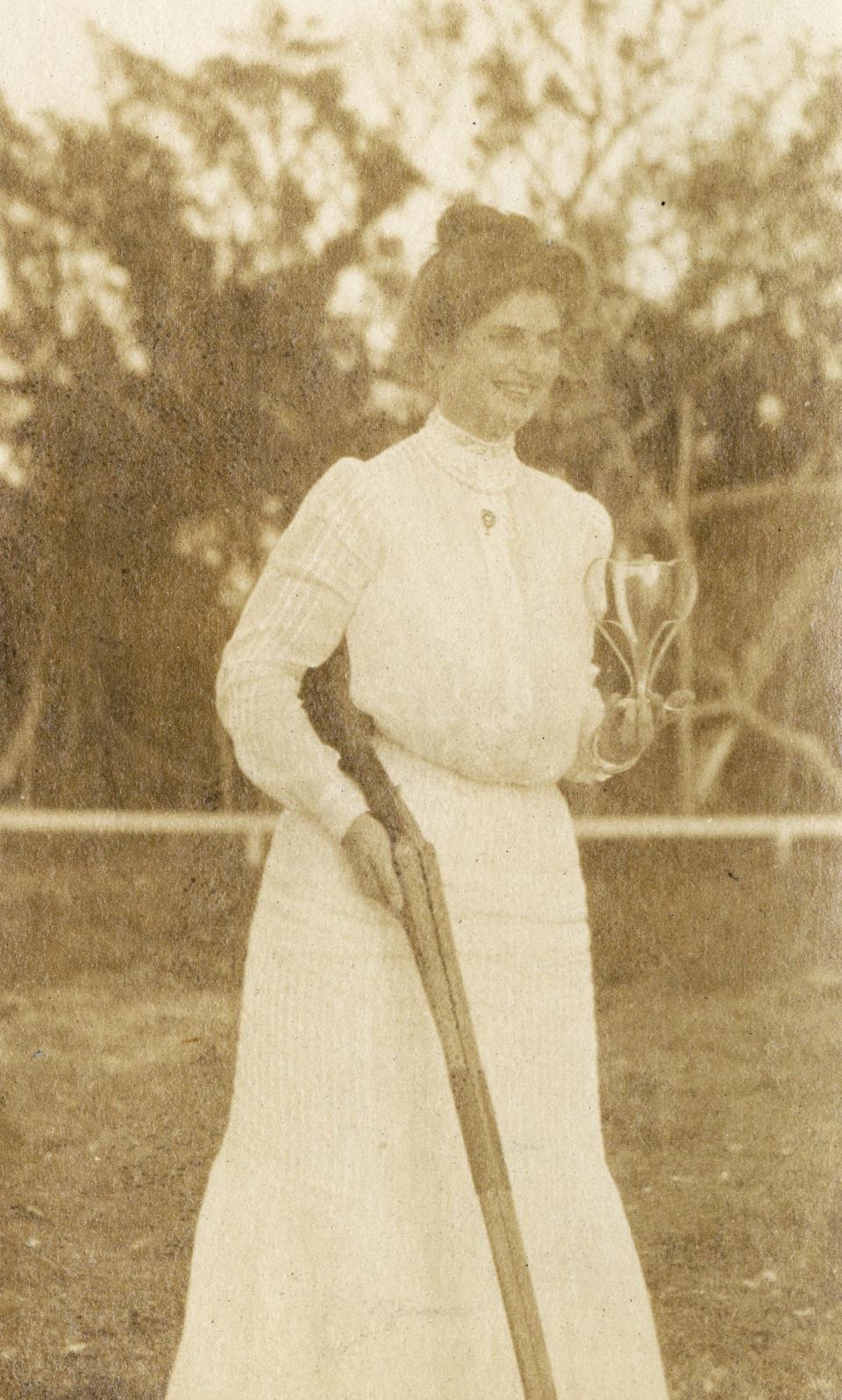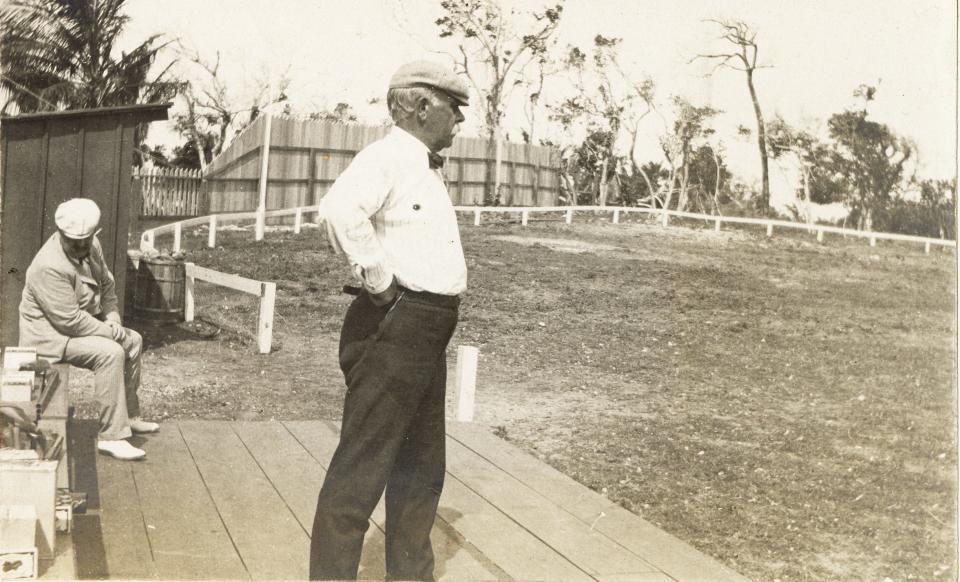Memory Lane: Both gents and ladies enjoyed shooting at Palm Beach Gun Club

- Oops!Something went wrong.Please try again later.
Beyond trunks full of gowns, jewels, tailed tuxedoes, walking dresses, parasols, feathered hats and other fashionable staples they brought to Palm Beach for their weekslong winter stays, elite Gilded Age travelers brought a myriad of other items.
Guns weren’t out of the question.
>> RELATED: Memory Lane: George and Betty, the dancing stars of The Breakers
In the early 20th century, a popular activity for both men and women involved shooting — and not the hunting kind many local pioneer-residents did, especially considering Palm Beach remained largely undeveloped and full of wildlife.
Affluent visitors consorting in the fully developed ocean-to-lake corridor anchored by Henry Flagler’s two resort hotels, including The Breakers, would head out on afternoon jaunts to take aim at birds, including “clay pigeon” targets.
In long skirts, suits and hats, they’d travel by boat or via a then-popular “wheelchair” conveyance — wicker chairs mounted on the front of bicycles pedaled by hotel workers — until they were two miles north of the hotels.
Welcome to the Florida Gun Club, aka the Palm Beach Gun Club, which was located on high land now encompassing the Palm Beach Country Club.
The gun club was established by at least 1902 and for some hotel guests, especially those who belonged to gun clubs in the northeast, it became as coveted a destination as the golf course laid out between Flagler’s hotels.
“The Florida Gun Club, recently organized at Palm Beach and whose membership is mostly composed of Northern people, has been holding a series of shooting matches for women in addition to the regular events for men,” the New York Times reported in 1902. “Some of the women have shown unusual skill.”
The facilities at the club were sparse during its first year, but soon they included a two-level clubhouse.

>> RELATED: Memory Lane: The Sterry boys ran Breakers and Royal Poinciana for Henry Flagler
Covered open-air verandahs provided comfortable vantage points to view the main activities: trap shooting — firing at clay pigeons sprung from a trap into the air — and live-bird shoots at least twice a week.
“The shooting (with shotguns) begins promptly at a quarter after two,” a 1905 article in Motoring & Boating noted.
“These shoots for silver cups or sweepstakes, occurring twice a week or oftener, are quite the smartest thing. … The clubhouse verandas are usually filled with ladies looking on, and while at first they found it hard to see birds hit, they now exclaim: “Oh, too bad” when an innocent bunch of feathers escapes unharmed.”

Match scores and competition winners’ names frequently were listed in the periodical Forest & Stream along with news from other gun clubs in the country.
Some of the richest members of the Palm Beach club were said to have once hosted an evening fete, with dinner and Champagne for 200 brought by boats and wheelchairs to the club’s grounds “strung with Japanese lanterns.”
New Yorker John D. Crimmins Jr., described as “one of the most popular” young men who wintered at The Breakers, served as the gun club’s first president.
His father, John D. Crimmins Sr., a well-known New Yorker and wealthy real estate agent said to be a friend of Flagler’s, was a key player in the Sailfish Club.
Longtime club manager Willian Dietsch had come from New York to Palm Beach in 1893. After serving on one of Flagler’s hotel-building crews and later as a yacht club steward, he helped organize the gun club.
Another gun club notable, treasurer Thomas Tipton Reese, the patriarch of a prominent pioneer family, would go on to be elected Palm Beach’s second mayor in 1918 after his father-in-law, Elisha Dimick, had been the first since 1911.

The gun club seemed a world away from the island’s hub of activity around Flagler’s hotels and businesses around them.
For years, the club’s sole neighbor was a dairy farm owned by pioneer Harlan Page Dye, who’d previously built and run a hotel until it burned down in 1897.
But limelight hit the north end by 1912 when Henry Phipps, a partner of Andrew Carnegie, acquired three lots for $90,000 just north of the gun club.
In what was considered “the most important land purchase of the season,” Phipps would soon build villas for himself and his children there.
In 1913, the gun club and Dye’s dairy farm were sold for an undisclosed sum to Flagler’s Florida East Hotel Co., which wanted to build a second 18-hole golf course for its guests.
“Here, on a stretch of high, rolling land, extending from Lake Worth to the ocean,” the New York Times wrote, “a second eighteen-hole golf course will be laid out and as fine a country club built as there is in the United States.”
When the Palm Beach Country Club opened in 1917, the gun club was a memory, but it helped inspire the founding of later gun clubs in West Palm Beach.
This article originally appeared on Palm Beach Daily News: Palm Beach history: Clay pigeon and live birds were targets at gun club

